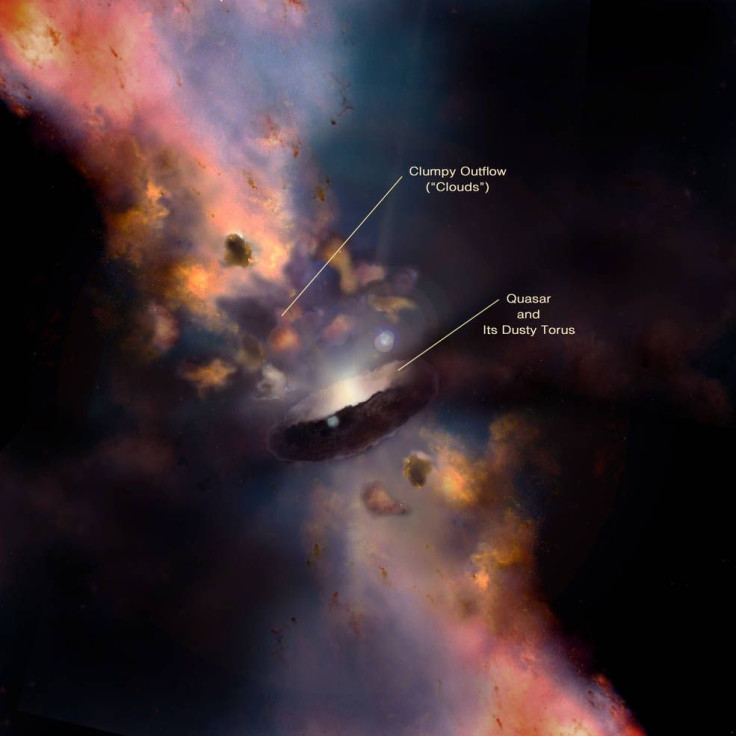Scientists Explain Why Clouds Form Near Black Holes

KEY POINTS
- Scientists explained how clouds form around black holes
- The black hole's high-energy surroundings eject gas
- The gasses ejected by black holes into space turn into clouds
Scientists explained how clouds or massive clumps of cosmic material form around black holes. Unlike the materials that fall into the center of black holes, the cosmic clouds do not get devoured.
The study about the clouds around black holes was conducted by a team of astrophysicists from various universities. Their findings were presented in a new paper published in the Astrophysical Journal Letters.
Supermassive black holes, or those with masses equivalent to 100,000 Suns, are often found at the center of galaxies. Although the black hole itself cannot be spotted directly, its vicinity can be observed through the bright light it emits as matter gets torn apart and consumed.
Through space telescopes, scientists on Earth are able to study black holes and their surrounding regions. Through their observations, they often come across massive clouds surrounding the black holes.
In a recent study, a team of scientists looked into these clouds to understand how they form. Through their investigations and the use of computer models, they learned that these clouds are actually clumps of gas ejected from the center of the black hole.
These gasses do not fall into the black hole because of its highly energetic surroundings. Due to the high-energy radiation generated by fast-moving particles, gas gets ejected away from the black hole.
As the gasses reach space, they experience something similar to a traffic jam. According to the scientists, as the gas gets ejected from the black hole, it moves at a speed that’s too fast for it to cool off and form clumps.
Eventually, it gets stuck behind the gasses that have already cooled off enough to form clumps. As the black hole continues to eject gas, the clumps of gas floating around it gets bigger.
“Near the outer edge of the shell there is a perturbation that makes gas density a little bit lower than it used to be,” Daniel Proga of the University of Nevada and co-author of the study said in a statement. “That makes this gas heat up very efficiently. The cold gas further out is being lifted out by that."
© Copyright IBTimes 2025. All rights reserved.





















